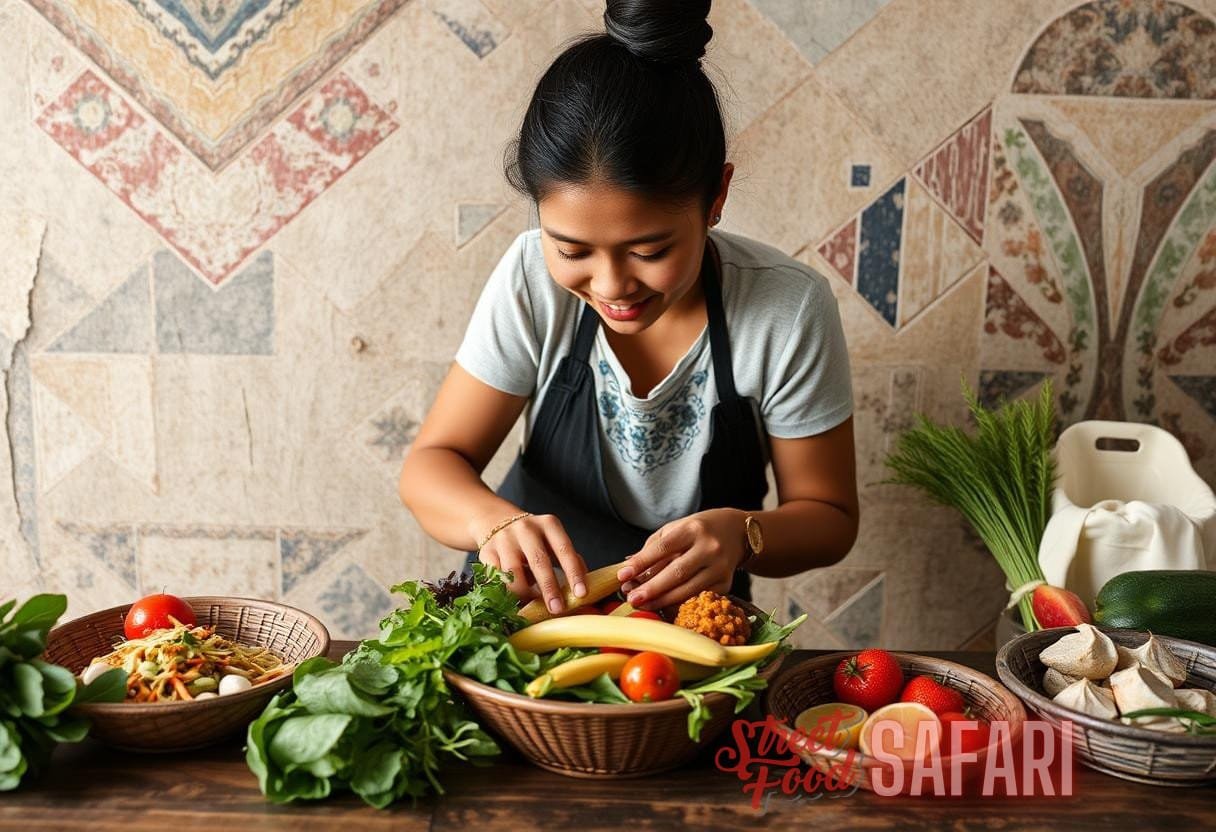Introduction
Traveling is not just about sightseeing and exploring famous landmarks; it is also an opportunity to taste new flavors and experience the culinary traditions of different cultures. Exotic cuisine is one of the most fascinating aspects of travel, as it allows you to uncover unique flavors, colorful spices, and culinary techniques passed down through generations. Whether you are an adventurous foodie or simply curious about other cultures, culinary adventures offer a window into the heart and soul of a destination. In this article, we will delve into the world of exotic cuisine, uncovering the flavors and cultural insights that await you on your next journey.
The Diversity of Exotic Cuisine
Exotic cuisine encompasses a wide range of culinary traditions from around the world. Each country and region has its own distinctive flavors, ingredients, and cooking techniques, making every culinary adventure a unique experience. Here are some examples of exotic cuisines that you can explore:
- Thai cuisine: Known for its complex flavors and aromatic spices, Thai cuisine offers a harmonious blend of sweet, sour, spicy, and salty. From the fiery dishes of the northeast region to the delicate flavors of the central region, Thai cuisine is a true feast for the senses.
- Indian cuisine: With its rich and diverse culinary heritage, Indian cuisine is a tapestry of flavors, textures, and aromas. From the hearty curries of North India to the fragrant biryanis of South India, Indian cuisine is a celebration of spices and regional specialties.
- Mexican cuisine: Mexican cuisine is a fusion of indigenous ingredients and Spanish flavors. From the spicy salsas and tangy ceviches of the coastal regions to the hearty stews and tender meats of the interior, Mexican cuisine is a vibrant mix of flavors and traditions.
- Moroccan cuisine: Known for its bold flavors and aromatic spices, Moroccan cuisine is a reflection of the country’s rich cultural heritage. From the savory tagines and fluffy couscous to the sweet pastries and refreshing mint tea, Moroccan cuisine is a sensory delight.
A Global Perspective: Exotic Cuisine Around the World
Exotic cuisine is not confined to a few specific regions; it can be found in every corner of the globe. Let’s take a closer look at some examples of exotic cuisine from different continents:
Asia
Asia is a treasure trove of exotic flavors and culinary traditions. From the spicy curries of Thailand to the delicate sushi of Japan, Asian cuisine offers a diverse range of flavors and textures. Here are a few notable examples:
- Japanese cuisine: Japanese cuisine is known for its precision, balance, and emphasis on fresh ingredients. From the delicate sashimi and sushi to the comforting bowls of ramen and udon, Japanese cuisine showcases the country’s culinary perfection.
- Chinese cuisine: Chinese cuisine is incredibly diverse, with each region having its own distinctive flavors and cooking techniques. From the fiery flavors of Sichuan cuisine to the delicate dumplings of Cantonese cuisine, Chinese cuisine is a culinary adventure in itself.
- Indian cuisine: As mentioned earlier, Indian cuisine is a vibrant tapestry of flavors and regional specialties. From the aromatic biryanis and rich curries of North India to the vegetarian delights of South India, Indian cuisine offers an explosion of flavors.
Africa
Africa is a continent rich in culinary traditions, with each country and region offering its own unique flavors and ingredients. Here are a few examples of African cuisine:
- Moroccan cuisine: Moroccan cuisine is a delightful blend of flavors influenced by Arab, Berber, and Mediterranean cultures. From the savory tagines and fragrant couscous to the sweet pastries and refreshing mint tea, Moroccan cuisine is a true reflection of the country’s rich cultural heritage.
- Ethiopian cuisine: Ethiopian cuisine is characterized by its unique flavors and communal eating. From the injera, a sourdough flatbread, to the spicy stews and braised meats, Ethiopian cuisine is a true representation of the country’s rich history and traditions.
- South African cuisine: South African cuisine is a melting pot of flavors, with influences from indigenous African, Indian, and European cultures. From the hearty stews and grilled meats to the flavorful curries and spicy chutneys, South African cuisine is a celebration of diversity.
Europe
Europe is often associated with classic dishes and traditional flavors, but it also has its fair share of exotic cuisine. Here are a few examples:
- Italian cuisine: Italian cuisine is known for its simplicity, freshness, and quality ingredients. From the creamy pasta dishes and wood-fired pizzas to the flavorful risottos and hearty stews, Italian cuisine is a celebration of regional specialties.
- Greek cuisine: Greek cuisine is characterized by its fresh ingredients, bold flavors, and healthy Mediterranean diet. From the tangy tzatziki and crispy spanakopita to the succulent grilled meats and olive oil-infused dishes, Greek cuisine is a culinary delight.
- Spanish cuisine: Spanish cuisine is a vibrant mix of flavors, with each region having its own culinary traditions. From the paella and tapas of Valencia to the hearty stews and cured meats of Castilla y León, Spanish cuisine offers a diverse range of flavors.
Uncovering Exotic Flavors: A Culinary Journey
Embarking on a culinary adventure is an opportunity to immerse yourself in the flavors and traditions of a destination. Here are some tips to help you uncover exotic flavors on your journey:
Research and Plan Ahead

Before you embark on your culinary adventure, take the time to research the local cuisine and popular dishes of your destination. Look for local food blogs, travel forums, and guidebooks to get an idea of the must-try dishes and hidden gems. Planning ahead will ensure that you don’t miss out on any culinary delights and help you make the most of your trip.
Try Local Street Food
Exploring the street food scene is an excellent way to taste authentic flavors and experience the local culinary culture. Street food vendors often specialize in traditional dishes that have been passed down through generations, offering a unique glimpse into the local food traditions. Be adventurous and try dishes that you might not find in a restaurant setting. Street food is often affordable, delicious, and a great way to connect with the locals.
External Link: Street food has become a global phenomenon, with cities around the world embracing the vibrant street food culture. From the colorful food carts of Bangkok to the bustling night markets of Taipei, street food offers a tantalizing array of flavors and culinary experiences. Embed Internal Link #1: An article available at Global Flavors provides further insights into the diverse flavors and culinary traditions from around the world.Take a Cooking Class
If you want to delve deeper into a destination’s cuisine, consider taking a cooking class. Cooking classes offer a hands-on experience, allowing you to learn about local ingredients, cooking techniques, and traditional recipes. You’ll get a chance to interact with local chefs, ask questions, and learn the secrets behind your favorite dishes. Plus, you can recreate the flavors of your trip back home and impress your friends and family with your newfound culinary skills.
Visit Local Markets
Exploring local markets is not only a feast for the senses but also an opportunity to discover unique ingredients and culinary treasures. Wander through the stalls, taste samples, and engage with local vendors to learn about their products. You’ll find an array of fresh produce, spices, herbs, and artisanal products that reflect the flavors and traditions of the region. Visiting local markets is a great way to connect with the local food culture and bring a piece of your culinary adventure back home.
Dine with Locals
Eating with locals is a fantastic way to experience authentic flavors and immerse yourself in the local culture. Whether it’s a homestay, a cooking class with a local family, or a dinner invitation from a friendly local, dining with locals offers a unique insight into their culinary traditions and way of life. You’ll have the opportunity to try home-cooked meals, learn about local ingredients, and hear fascinating stories about the food culture of the region.
Take Risks and Be Adventurous
When it comes to exotic cuisine, it’s essential to be open-minded and willing to try new flavors and ingredients. Be adventurous and step outside your culinary comfort zone. You may discover a new favorite dish or ingredient that you never thought you would enjoy. Embrace the unknown and savor the flavors of your culinary adventure.
Cultural Insights: The Connection Between Food and Identity
Food is not just about nourishment; it is a reflection of a culture’s identity, history, and social fabric. Experiencing the local cuisine of a destination provides valuable insights into its traditions, values, and way of life. Here are some cultural insights you can gain through culinary adventures:
History and Tradition
Culinary traditions are often deeply rooted in a country’s history and heritage. Exploring the local cuisine can help you understand the historical influences, cultural exchange, and migration patterns that have shaped a destination’s food culture over the centuries. For example, the use of spices like cinnamon, cloves, and nutmeg in Indonesian cuisine is a result of the country’s historical spice trade.
Social and Family Dynamics
Food plays a central role in social and family gatherings, and every culture has its unique dining etiquette and customs. By participating in traditional meals and dining experiences, you can gain insights into the social dynamics, values, and rituals of a community. For example, in many African cultures, communal eating from a shared plate is a sign of unity and hospitality.
Environmental and Agricultural Practices
The local cuisine of a destination is often closely connected to its natural resources, agricultural practices, and climate. By exploring the food culture, you can learn about the native ingredients, sustainable farming practices, and seasonal eating habits of a region. For example, Nordic cuisine emphasizes the use of locally sourced, seasonal ingredients and sustainable fishing practices.
Embed Internal Link #2: An article available at Unveiling Hidden Gems: Authentic Culinary Experiences and Food Safety Abroad offers tips on how to find authentic culinary experiences while ensuring food safety during your travels.Religious and Symbolic Significance
Food often has religious and symbolic significance in many cultures. By experiencing traditional dishes and understanding the symbolism behind certain ingredients or preparation methods, you can gain insights into a culture’s religious practices, beliefs, and rituals. For example, the breaking of bread in Christian traditions and the fasting during Ramadan in the Islamic faith are significant culinary practices.
In Conclusion
Culinary adventures offer a unique opportunity to uncover exotic flavors and cultural insights on your journey. From the diverse cuisines of Asia to the vibrant flavors of Africa and the classic dishes of Europe, exotic cuisine is a gateway to the heart and soul of a destination. By following the tips mentioned in this article and embracing the unknown, you can embark on a culinary journey that will engage your senses and broaden your understanding of different cultures. So pack your bags, bring your appetite, and get ready to savor the flavors of your next adventure.


